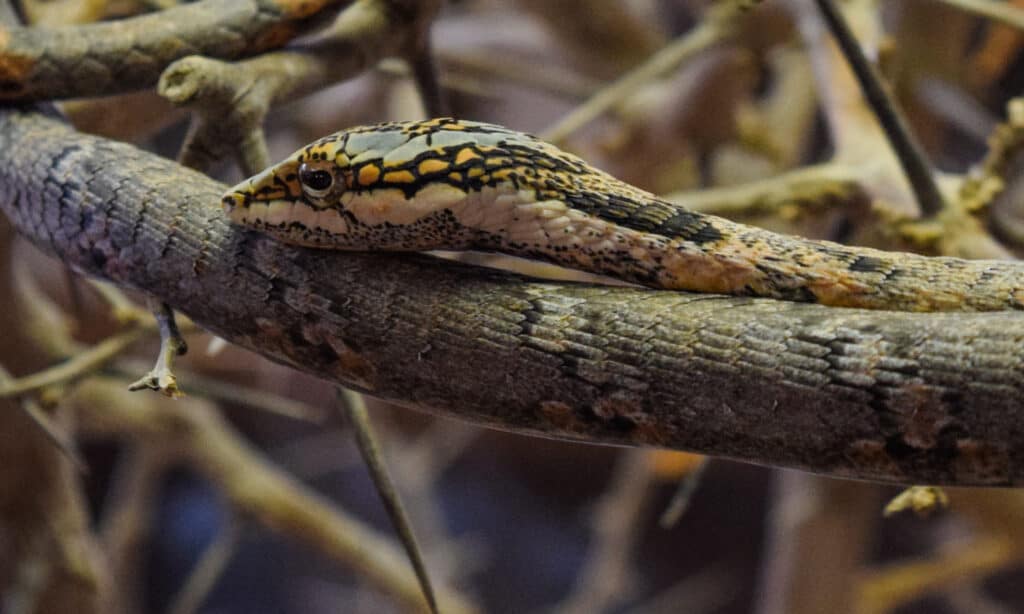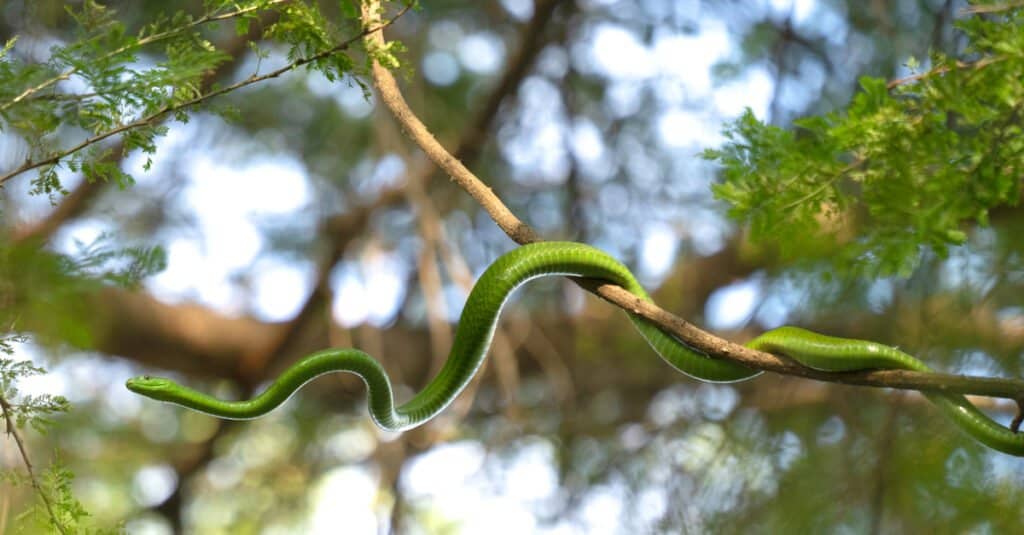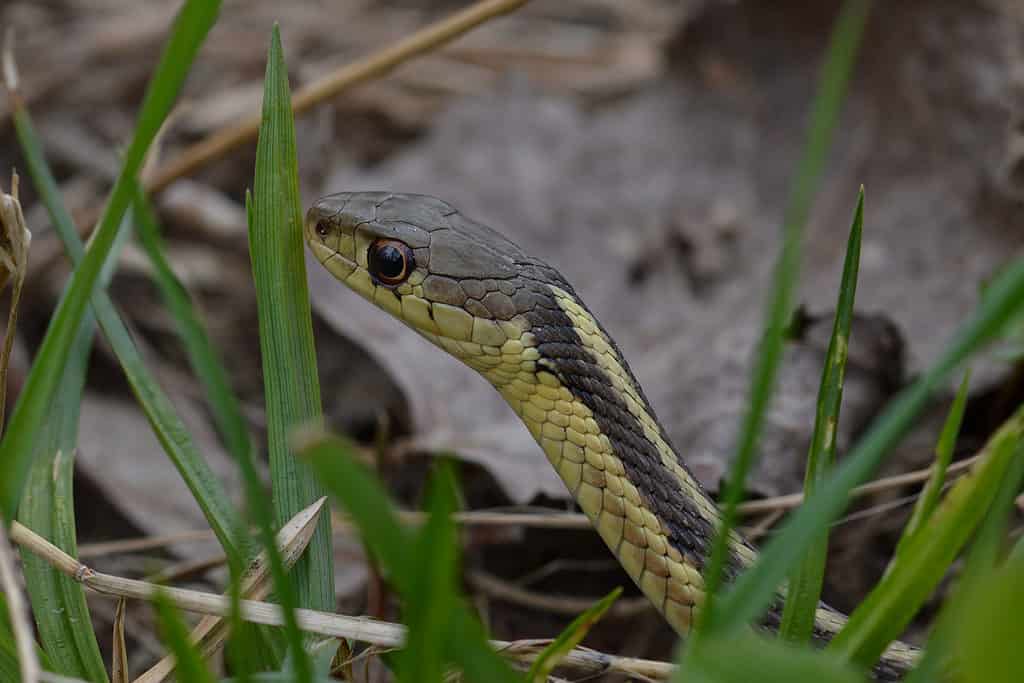Snakes are known to be excellent escape artists, as any snake owner knows all too well! Depending on the species, they can slip through tiny crevasses, climb up unclimbable walls, and make it out of impossible situations. Today, we are going to be learning a bit about this innate ability that some snakes seem to have when it comes to climbing, especially with how it relates to walls. Let’s see if snakes can climb walls!
Can Snakes Climb Walls?
As a general rule, snakes that have any climbing ability to begin with can climb certain types of walls without too much trouble.
In nature, snakes regularly climb up natural surfaces and seem to be well adapted for it. Rocks, trees, and other natural obstacles are almost too easy for snakes to traverse, especially if they are a species of snake that is designed specifically for climbing.
When it comes to man-made walls, however, things are a little different. Snakes can’t climb a sheer wall without having some small grooves or patterns to help them get a grip. Some man-made walls that snakes can climb include brick walls, stucco walls, stone walls, and fences. These wall types have divots, holds, or grooves that allow snakes to cling onto them as they go up them. The smaller the grooves or pattern, however, the harder it is for them to climb. Only the lightest or thinnest snakes have the ability to climb smoother surfaces like thin stucco or something similar. The larger snakes are heavier and require a little more grip when climbing in order to support themselves.
Some examples of surfaces that snakes can’t climb include glass, polished stone (smooth marble or something similar), and gapless wooden planking.
It is important to note that snakes can climb over any wall that is less than their total body length, even if it’s a surface that they can’t otherwise climb. Snakes have the ability to lift their heads and body up against a surface and pull themselves over it, provided they are able to get over the lip of it. Think of how a human can’t climb over a smooth wall, but if we can reach the edge, we are able to pull ourselves over it.
Can a Snake Chase You Down?
North American snakes don’t exhibit territorial guarding behavior or chase humans. Even though some of them, like the coachwhip snake, are quite speedy, reaching up to 8 mph, they can’t outpace an average human’s running speed of around 14 mph when not in distress.
However, humans are not on their menu, so there’s no motive for the snake to pursue them. Fear is the driving force behind the snake’s actions.
Whenever possible, it chooses to escape and defend rather than charge and attack like some other mammal predators.
What Snakes Are the Best at Climbing?
The snakes that are the best at climbing are usually going to be the ones that are thin-bodied and lighter. Heavier snakes like pythons aren’t bad at climbing trees, but they are too heavy to climb anything other than that with any agility. Here are a few examples of snakes that are known for climbing:
1. Rough Green Snakes

Rough green snakes
are small, nimble, and incredible climbers.
©iStock.com/Shoemcfly
The rough green snake, also known as the grass snake, is a small species of snake found in North America. It typically measures around 20-30 inches long and is bright green. It’s non-venomous and arboreal, meaning it lives in trees and shrubs near wetlands, fields, and forests. Due to its preferred habitat and thin body, it’s an excellent climber.
2. Twig Snakes

Twig snakes
spend their lives in the trees and are sometimes called vine snakes.
©Authentic travel/Shutterstock.com
Twig snakes are slender, venomous snakes found in various parts of Africa and Asia. They are small in size, typically measuring around 12-20 inches in length, and have a thin, twig-like appearance, making them difficult to spot in their natural habitat. These snakes are excellent climbers and live in trees and bushes, preying on small birds, rodents, and lizards. They are often referred to as “vine” snakes due to their appearance and extreme climbing abilities.
3. Eastern Green Mamba

Green mambas
are famously dangerous, but they are also incredible climbers.
©Dominyk Lever/Shutterstock.com
The eastern green mamba is a highly venomous snake found in parts of eastern and southern Africa. It is a relatively large snake, measuring up to 8 feet in length, and has striking green coloration. This arboreal species is a fast and agile climber, despite its relative size to the other snakes on our list. It lives in trees and bushes near forested areas. Of all the snakes in the world, the green mamba is one of the most famous due to its deadly venom.
4. Garter Snakes

Garter snakes
are found all over North America and can be found climbing all sorts of things in order to find food.
©Ryan Hodnett, CC BY-SA 4.0, via Wikimedia Commons – License
Garter snakes are a common and widespread non-venomous snake found throughout North America. They are relatively small, usually measuring around 2-3 feet in length, and are known for their distinctive stripes, which can range from green to brown to red. These snakes are primarily terrestrial but can swim and climb trees if necessary. We’ve included them on our list because of how often they are found around homes climbing siding or getting into places through climbing. They live in a variety of habitats, including grasslands, forests, and wetlands, and feed on small prey such as insects, frogs, and rodents. These little snakes are extremely common and are often the ones seen in backyards or around human establishments. Garter snakes are harmless to humans and play an important role in controlling pest populations, so don’t kill them!
Summary of 4 Snakes That Are the Best At Climbing
Here’s a recap of the four snake species we looked at that are great climbers:
| Number | Snake | Length | Type |
|---|---|---|---|
| 1 | Rough Green Snakes | 20-30 inches | Non-venomous |
| 2 | Twig Snakes | 12-20 inches | Venomous |
| 3 | Eastern Green Mamba | Up to 8 feet | Highly venomous |
| 4 | Garter Snakes | 2-3 feet | Non-venomous |
The photo featured at the top of this post is © Kurit afshen/Shutterstock.com
Discover the "Monster" Snake 5X Bigger than an Anaconda
Every day A-Z Animals sends out some of the most incredible facts in the world from our free newsletter. Want to discover the 10 most beautiful snakes in the world, a "snake island" where you're never more than 3 feet from danger, or a "monster" snake 5X larger than an anaconda? Then sign up right now and you'll start receiving our daily newsletter absolutely free.
Thank you for reading! Have some feedback for us? Contact the AZ Animals editorial team.






